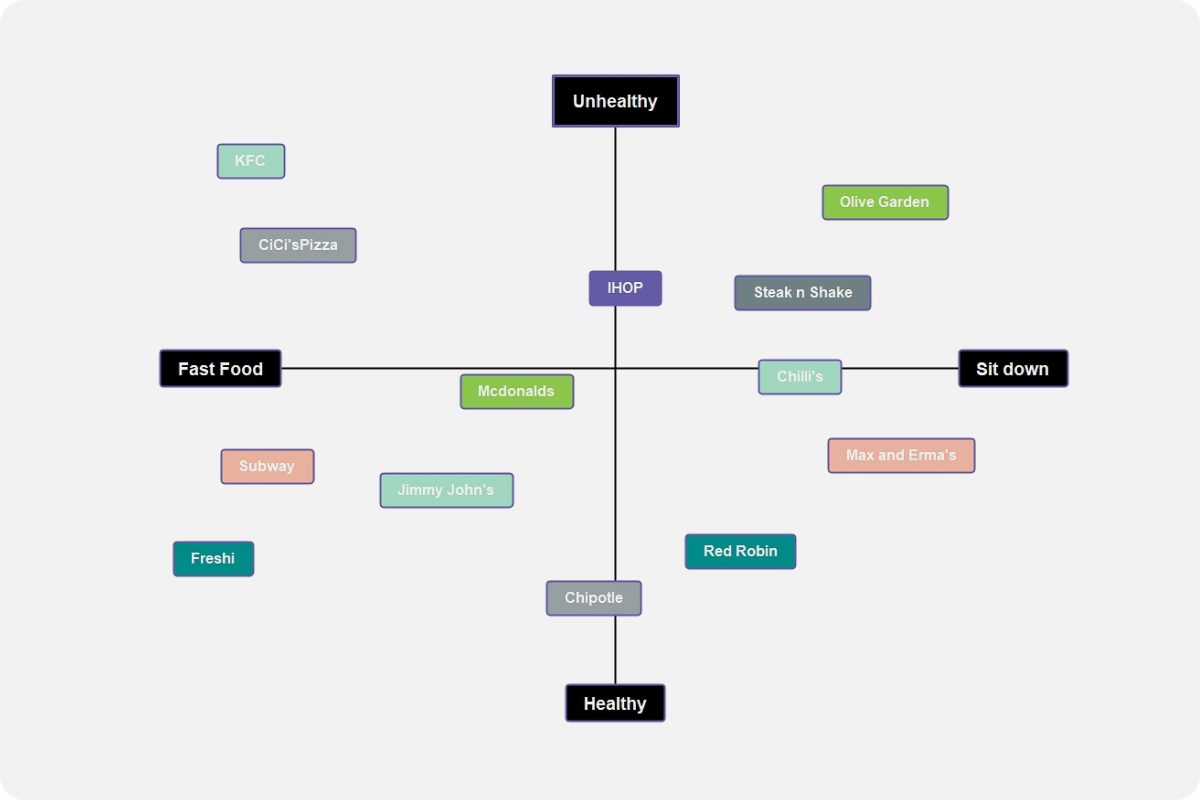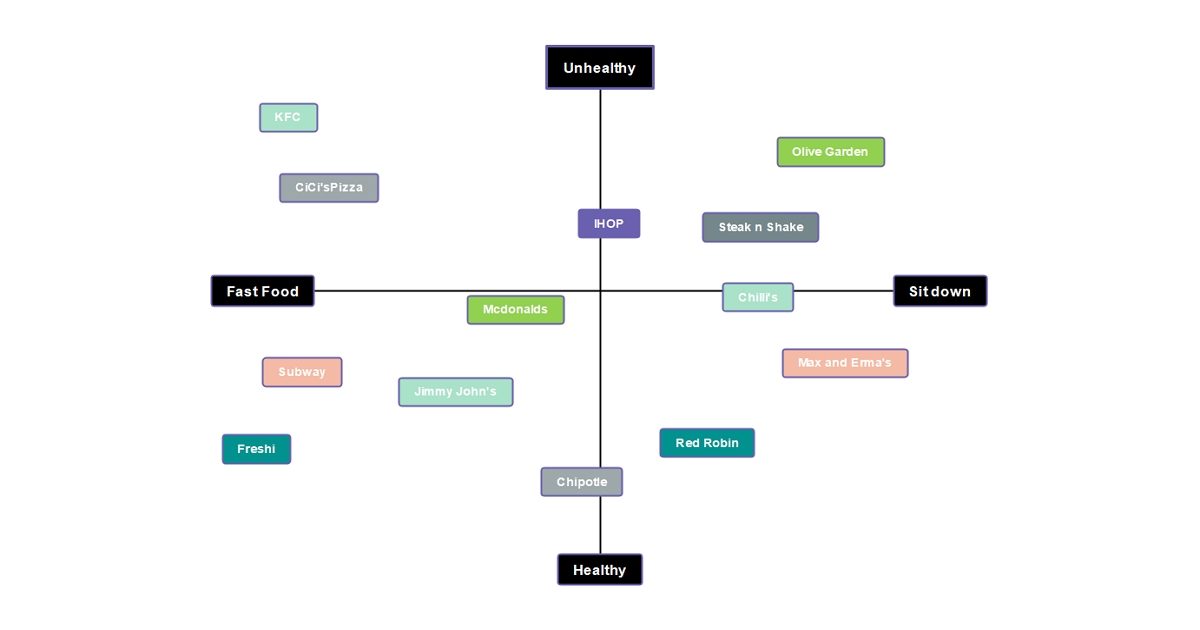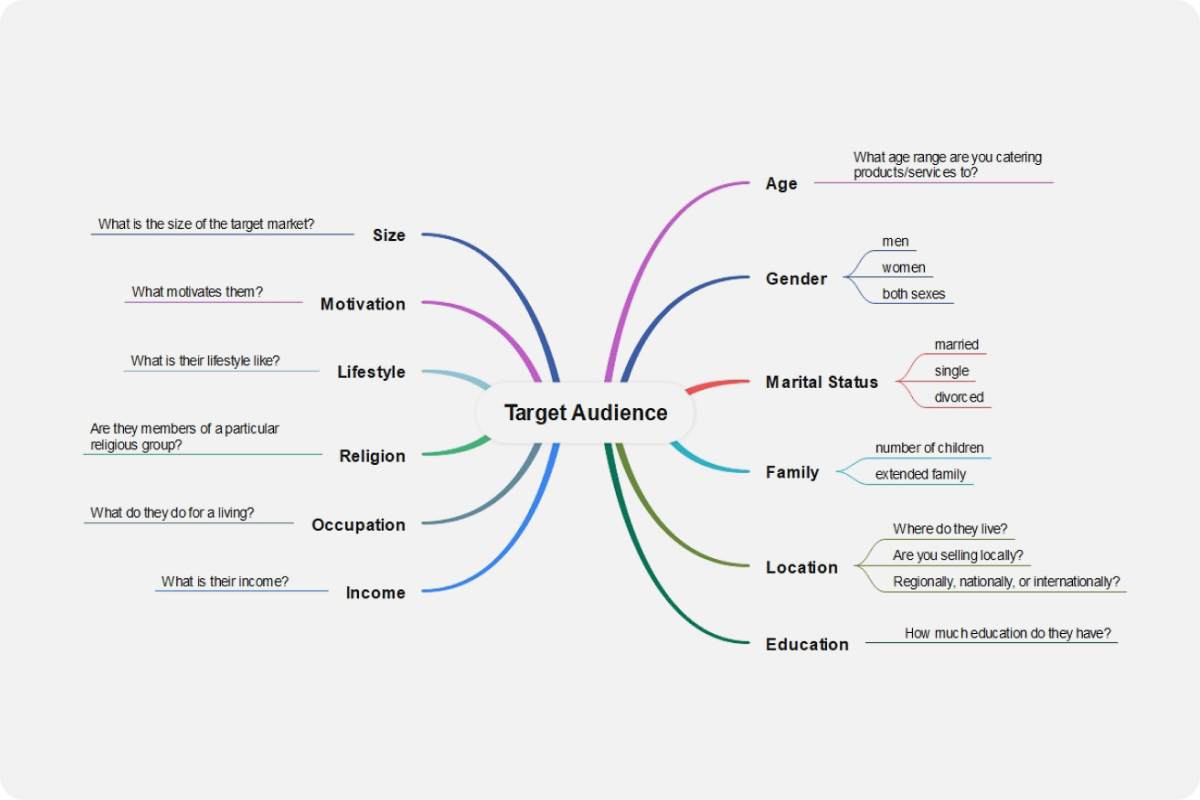About the perceptual map template
What is a perceptual map?
Some call a perceptual map a positioning map, which provides a clear visualization of the company's or product's state from the customers' perspectives. This approach is generally essential for marketing teams to assess consumer behaviors and deliver specific marketing campaigns.
The perceptual map template illustrates the various perceptions of customers concerning particular attributes of a company, product, service, brand, or idea. When using the template, participants are generally asked to place products or services relative to each other along two or more axes.
The structure usually relies on research and brainstorming on competitors and often is created by a marketing representative and discusses the gathered information to the company. It can also be performed in a group where the sales and marketing personnel in the company provide insights into every position.
Why create a perceptual map?
Organizations and companies using the perceptual map template can benefit in several ways:
- Understanding the market segment. Marketing specialists use the perceptual map to segregate services and products that fit the market and competitors accordingly.
- Identify Existing Competition. The perceptual map template allows businesses to identify and take note of existing competition services or products in the market survey. You can survey approximately 3-4 product competitors to keep you in the loop on what is happening in the industry that you are in.
- Helps in deciding product positioning. The position of products in stores is not just merely displaying them; it entails research and study. It can be pretty risky to be against established brands; the template guides companies in strategically positioning their products enough to entice potential customers.
- Helps track placements of new services and products. New products sprout every day, and your business has to be updated with what's in the market. The perceptual template gives marketing specialists an avenue to immediately track and evaluate new products placed in the market.
- Guides in creating a market survey. Formulating a perceptual map template allows companies to design market surveys following your marketing plans. Retail businesses can set up specific spaces for people to take the survey. Some business marketing specialists use web portals to conduct surveys.
- Perceptual mapping is used for various products. Apart from checking quality and price, the template can be used in the services or products such as the following:
- Landscaping services: environmental effects versus appearance
- Hotels: amenities and location versus prices
- Coffee: sustainability versus price
Remember that you need to constantly update the information to keep up with your competitors when structuring this template. The purpose of this framework is to determine where your product sits on the market; hence, it needs to be updated consistently to evaluate whether your marketing strategies are working or not.
Tips for creating a perceptual map
A perceptual map template can be both straightforward and complex, depending on how you use it. Here are some key points to take note of in making your structure.
- The first is to select the number of parameters or dimensions for the diagram. You can choose random numbers; however, the most common parameters are price and quality. Other segmentation styles that can guide in making your template are the following:
- Shoes: style, design, functionality, comfort
- Holidays: travel distance, safety, value, temperature, cultural offerings
- Breakfast cereal: variety, taste, health values, sugar
- Next is to list the competitors in the industry.
- After taking notes of your competitors, it's now time to rate them. You can start by giving each competitor a rating between 1 and 5; assign 1 to be the lowest and five being the highest. Also, provide a rating for your product, so you will know where you stand on the map.
- After you have mapped out everything, you will determine where your products sit compared to your competitions and the possible gaps in your target market.
Perceptual Map Examples
Constructing the perceptual map template can either be done on traditional whiteboards or through online software. Here are some examples of this structure which you can base your framework from:





